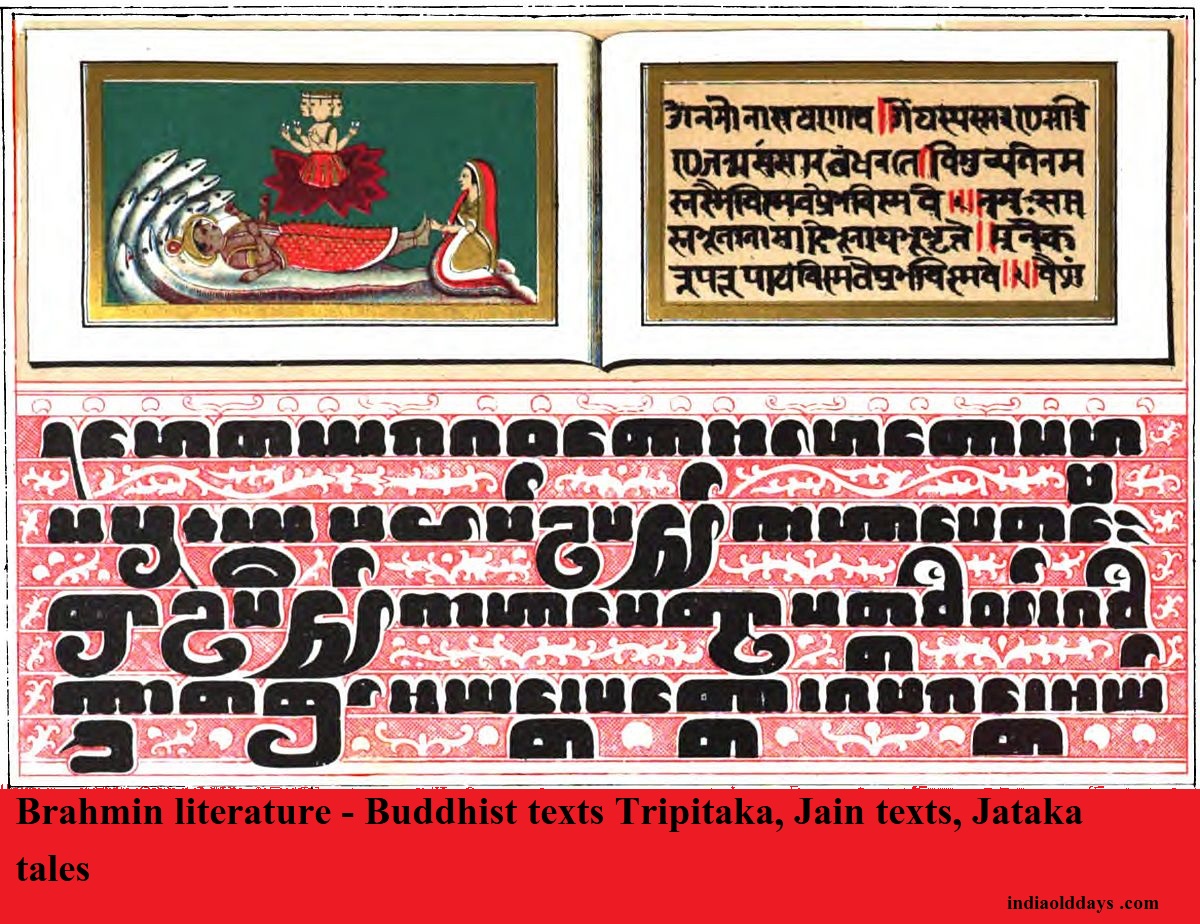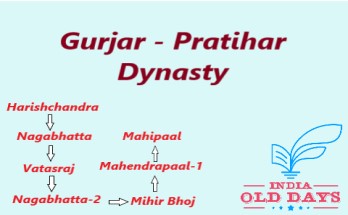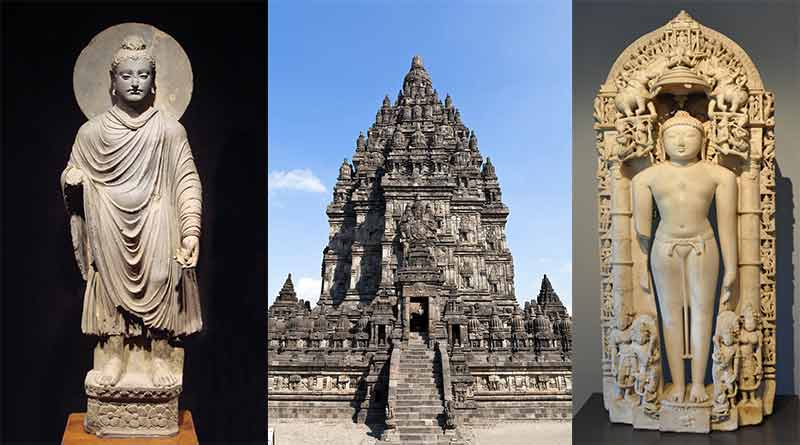Political expansion in Uttarvedic Period
In this period, the extension of the Aryans was up to eastern Uttar Pradesh and Bihar (from the Sadanira river to the Gandak river) and in the south, it is up to Vidarbha (Maharashtra).
Aaryavarta-
By the time of the Uttarvedic period, the whole region of Aryan’s residence was Aaryavarta.
- In the political expansion, the contribution of enthusiastic kings (by iron tools) was equal to the Brahmins (the forests were cleared by the fire).
- In this period Jan became the Janpad. That is, the regional state was established. Bharat Jan + Puru Jan = Kurujan pad is made. (Situated in Upper Doab of Ganga-Yamuna).
Areas under the Aryans –
- Kuru Janpad-
Sansadivad was the initial capital of Kuru Janpad. There was a war between Kaurava and Pandava called Mahabharat in Kuru Janpad in 950 B.C. The principal rulers of the Kuru district – Bahlik Pratipakshi, Parikshit (name in the Atharvaveda), Janmajeya, Nichakshu. Hastinapur was destroyed by flood at the time of Nichakshu, so Koshambi was made a new capital.
- Panchal Janpad-
(Kriwi + Turvas) It was expanded up to Bareli, Badayun, Ruhelkhand. Main rulers of Panchal Janpad- Pravahan (Patron ruler of scholars), Jaibali, Arunishvetketu (high-quality Philosopher). Arunishvetketu had organized a council in Panchal in which the Yagyavalkya became the winner. In the Shathpath Brahmin, Kuru, Panchal districts are said to be representative of Vedic civilization. Arunishweatketu had obtained new areas by fire, with the help of his Guru Rahul Gan. He was a philosophical king.
- Koshal Janpad-
Located on the banks of the river Saryu (UP). The place connected with the Ramkatha.
- Kashi Janpad-
Located on the banks of the Varanavati River (Section of Ganges). Its capital was Varanasi. Main king of Kashi Janpad- Ajaatashatru (philosopher king).
- Matsya Janpad-
Area of Alwar, Bharatpur, Jaipur was known as Matsya Janpad. Its capital was Viratnagar.
- Videh-
Mithila was the capital of Videh. This Janpad was situated on the banks of river Sadanira (Gandak). Ruler-Janak, Videh Madhava (philosopher-ruler, who has knowledge of Vedas, is the king.)
- Gandhar-
This Janpad has situated on the banks of river Indus. Its capital was Taxshila.
- Madra Janpad-
This Janpad has also situated on the banks of river Indus. The capital was located near Punjab-Sialkot.
- Kaikey Janpad–
This Janpad located between Gandhara- Vyas. Ruler-Ashwapathi Kaikey (philosopher king).
Such areas which were not subject to Aryans –
- In East- Anga and Magadh.
- In South- Shaber and Pulind.
The power of the king increased in the Uttarvedic period because now iron was used for war. Literature provides knowledge about an increase in the power of the king. In this period many religious rituals were associated with the king, for example.- Rajyabhishke Sanskar, Ashwamegh Yajna, Rajsuya Yajna.
- The King started taking many titles like – Emperor (in the east), Swarat (In the West), Virat (in the North), Bhoj (in the South), Prakrat, etc.(according to Shathpath Brahmin).
- Aitarey Brahmin mentioned that the kings of different regions take separate degrees. The Aitarey Brahmins mention the principle of Rajatva and clarifies the growth in prestige.
Major Yajna- Yajna’s prestige reached a very high level in the Uttarvedic period.
1. Ashwamegh Yajna –
- This yajna used to do for state expansion.
- There are 4 queens, 4 Ratnins /brave officers, 400 servants in this. Apart from this, 1 elephant, 1 white bull, 1 white horse, 1 white chhatra was necessary.
- This yajna was going on for 3 days.
- After a year, the anointed horse was sacrificed with 600 bulls (bulls) in this yajna.
2. Rajasuya Yajna-
- This yajna used to increase the honor and respect of the king.
- going on for more than 1 year.
- the water of 17 rivers was necessary. (In which the water of Saraswati river was considered the main.)
- The presence of 12 officers, 1 queen was necessary.
- During this yajna, the king was made the winner in the game of Akshakrida (dice game), Goharan (hanking the cow), etc.
3. Vajpayee Yajna-
- Vajpayee yajna’s intention was to increase the physical and spiritual power of the king and to give him a new life.
- The chariot run (chariot race) was organized. In which king was made the winner.
- This yajna is also called the Olympics of the Vedic period.
- The number of officers increased (20). Of these, in which there were 12 permanent officers. These are:
12 Permanent officers-
- Yuvraj
- Mahisi (Patarani)
- Gramini ( ग्रामणी)
- sooth (king’s companion)
- Kshatra / Pratihari (Chief of gatekeepers)
- Sangrahitri (head of treasury)
- Palagal ( Clown, friend of Raja, messenger)
- Akshvay (King’s ally in the game of dice)
- Gonikartan (King’s ally in hunting)
- Bhagyudh (tax collector)
- Fighter ( सेनानी)
- The priest
In this period the representation of four castes get.
Officers were called Ratnani (Veer).
Temporary Officer-
| Karmakar- Chief of factories. Sthapati- Chief of distant areas. Shathpati- Chief of 100 villages. Yuvraj,Mahisi, Gramini, Sooth, Kshatra /Pratihari, Sangrahitri, Palagal, Akshvay, Gonikartan, Bhagyudh, Fighter, the Priest. |
Other features of the Uttarvedic Period
Vidath is mentioned very little (22 times in Atharvaveda).
- The importance of the Sabha and the Samiti has increased significantly. It was used to control the king. In Atharvaveda, Sabha has been used 7 times and Samiti 13 times.
- Tax system became regular in this period (the permanent tax system).
- The tax system, called sacrifice (things of daily use), was also fixed.
- Taxes like- Part, consumption, fees, are also generated.
- Part-Land Revenue
- Consumption– things of Daily Consumption
- Fees – Commercial Tax (Taxes) All these taxes were compulsory.
- The Treasury became little rich. Yet the development of bureaucracy apart from the king’s permanent army and blood relations was not even developed during the period. Reason: In this period also the economy remained in subsistence form. Surplus- Production was limited because agricultural activity was mainly done with tools of bronze and copper even though it became the main occupation. Farming equipment of iron is rarely found. Therefore, the increase in agricultural production was not possible.
Reference : https://www.indiaolddays.com/





